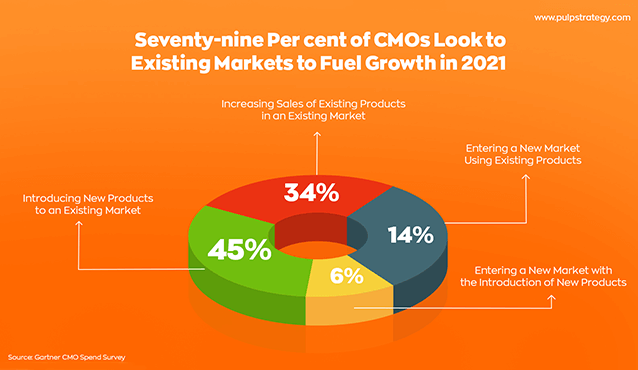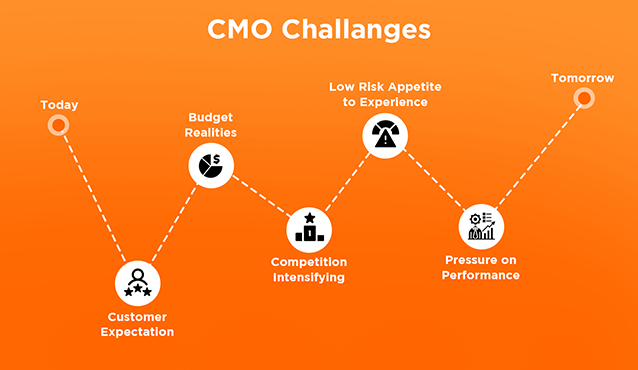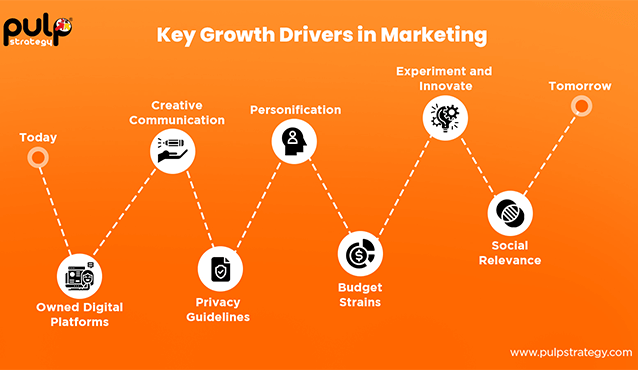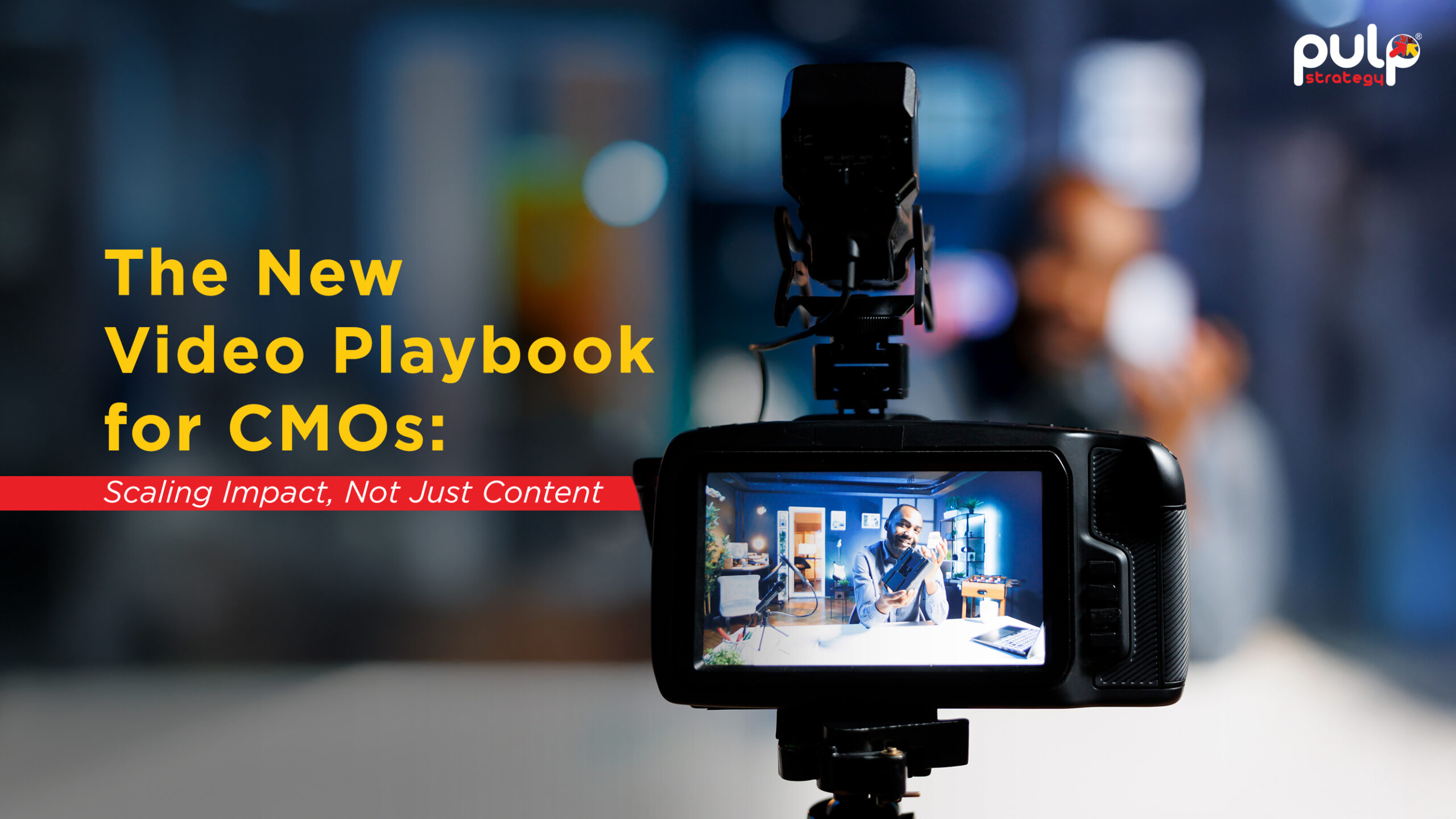Covid 19 has had a devastating impact on most businesses, marketing plans that were well mapped and business growth trajectories have been disrupted. Marketing budgets continue to fall sharply in 2021. Marketers are averse to risks and the focus is primary to sell existing products to existing consumers. This low-risk approach is focused on scaling sales and improving customer engagement to improve adoption of new products or upgrade existing consumers to newer products. To balance this brand are offsetting with select new market launches or product innovations which can jumpstart an existing static market.
There is pressure on performance, but branding is the trump card. The demand and the expectation from digital are growing and this opens the opportunity to expand digital footprint and transform the digital marketing strategy practice. There is pressure on performance and short-term goals however my advice to clients is to create a balance, performance marketing may create an initial spike, but those customers will probably not come back to a pure transactional relationship, the balance must be maintained with branding and engagement.
The Customers have changed, there has been pivotal shift to wanting a brand relationship before they want a brand product. Consumers are looking for meaningful conversations. Brands should take the lead in finding solutions to either issues directly impacting their audience or societal and cultural issues which their consumers believe in. As a strategic alignment CSR and cause based marketing with a genuine empathy and willingness to create impact is important for brands.
Digital is not the end all, fundamentals of marketing and advertising cannot be undermined. No amount of “retargeting” can make up for poor communication or subpar branding, consumers want to buy from brands that they believe are associated with a common cause or are contributing to a building a better world. Branding in today’s environment goes beyond product, communicating or changing internal and external policies, commitment to your immediate as well as a larger ecosystem is an important part of this change and digital has a big role to play. This commitment to societal change is a increasingly a part of our larger strategy for brands.
In the last 12 months this changed approach to strategy for brands on digital has seen interesting outcomes for us. On one side we enabled and worked alongside a cosmetics and Skin care brand go from pure direct selling to ecommerce and D2C with powerful results and more importantly future possibilities. On the other hand a white goods brand that pivoted their approach to a digital first in SARC countries with strong growth lines within the 1st couple of months.
More with less. There is a pressure on budgets and thus the balance is becoming critical to achieve, we are doing more with less. This less is not just budgets but the risk taking capabilities for brands today, the reinvention possibilities, the aggression to expand (in most cases), the willingness to experiment with newer formats amongst other factors. One approach cannot fit all, while consumer brands are looking at a growth but accepting the realities of budget cuts is a necessity. I recommend having a small budget in the open to experiment bucket, because competition is intensifying at every level and in every market. Consumer sentiment has shifted, in some area so much so that there is no playbook anymore. Exploring newer avenues in the digital and the hybrid marketing space helps us unlock hidden opportunities for our clients that are otherwise elusive.
A technology client in the B2B space opened in allowing us an opportunity to build and drive a digital marketing program for B2B audiences, today this program won us an award. The award is great, but more than that it’s the process of evolving a fresh format for a B2B marketing campaign which was immensely satisfying and rewarding.
Despite the risk averse sentiment innovation is thriving. More so possibly because of it. The best marketers want to rapidly identify new opportunities to keep their growth agile. They are constantly scanning for new digital marketing trends, technology, and platforms that enable a smarter outcome with faster GTM and lower spends. (no pressure). Better managing digital engagement such that it seamlessly dove tails into revenue growth is a strong trend, it’s the balance between both worlds, using Ai for SEO for example has been one of those gamechangers for us, improving performance and reducing costs. We have been able to extend these advantages to our clients.
In all this, personal information and privacy plays an increasingly important role, to a point where many marketing routes and tactics which were common and reliable a few quarters ago be used anymore as PII information and its usage are now held to higher standards with cannot a longer-term outlook. The impact on advertising is substantial and this makes creative innovation to drive consumer engagement more important than ever.
Personification is a complete flip, when it comes to owned properties especially personalization is almost a necessity. Consumers are open to willingly provide information which makes their experience relevant, easy and saves them time. Evolving consumer journeys based on detailed customer personas is improving the last mile especially in D2C brands. As brands move to build and grow their own websites while selling on marketplaces the understanding of personification and its implementation has gained importance. Adoption of design systems sees increased consideration style guides, pattern libraries, organization principles, templates, reusable codes, playbooks and more have become a part of the best practice solutions
Content is the largest revenue driver in digital but gobbles up budgets. Its true and there is no navigating around it, content demands the most time from marketeers and agencies alike, all the over hyped stories about last minute changes ae true but there is a reason, content is the largest revenue driver on digital, it’s natural that it takes most of the time, effort, bandwidth and budget out of any marketing plan. We spoke about AI in SEO and there are the added option of being smart about content, rehash, reuse, and that’s going to pay off. Its thousands of hours saved with great quality and excellent impact. Cornerstone content pieces are the ones which need that Picasso perfection, post which there are edits, adaptions into playbooks, white papers, video and so much more.
Key Growth Drivers in Marketing
There are these and many emerging trends, one size doesn’t fit all but the writing on the wall is in favor of speed, a balance of experimentation and conservatism and above all a dogged dedication to consumer engagement in meaningful ways.










